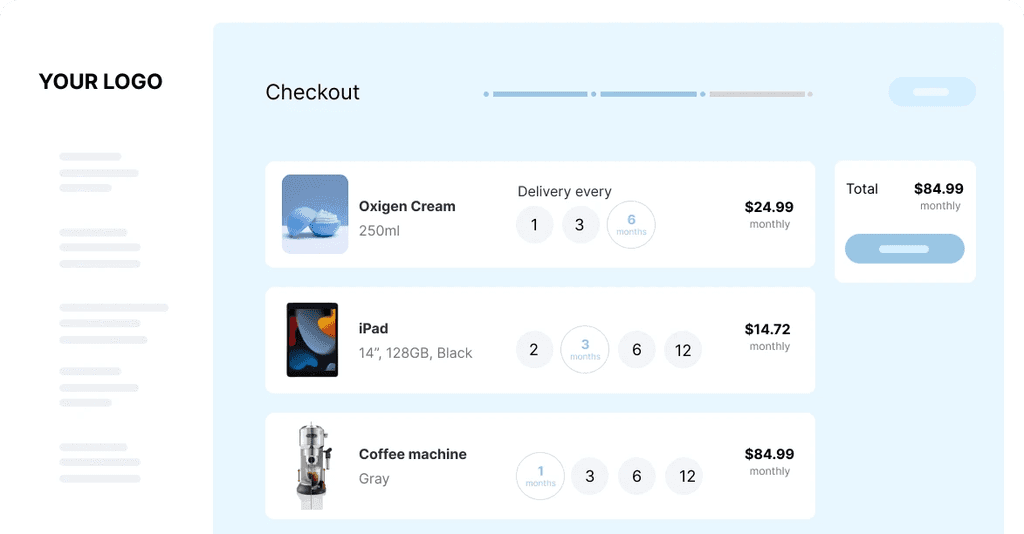
What is recommerce: The future of sustainable consumption
Lorena Correa

May 28, 2024
Recommerce, or reverse commerce, is transforming the way consumers and businesses interact with second-hand products. This trend not only promotes a sustainable business model but also meets the growing consumer demand for more responsible practices. In this article, we will explore what recommerce is, its benefits, and its impact on various industrial sectors.
What is recommerce?
Recommerce refers to the practice of selling and buying used, restored, or refurbished products. This business model gives a second life to products that might otherwise end up in landfills, thus promoting sustainability and the circular economy.

Recommerce is not limited to the sale of physical products but also includes repair and restoration services. This ranges from repairing electronic devices to restoring antique furniture. By extending the lifespan of products, recommerce helps reduce excessive consumption and promotes a more sustainable lifestyle.
At its core, recommerce represents an evolution of traditional consumption. Instead of following a linear "buy-use-dispose" model, recommerce promotes a circular approach where products have multiple life cycles. This paradigm shift is not only beneficial for the environment but also offers economic advantages for both consumers and businesses.
The rise of recommerce
Recommerce has seen significant growth in recent years. According to the latest studies, this market is experiencing an annual increase of 20% 【30†source】. This growth is not surprising, given that consumers are seeking more sustainable and affordable alternatives. The COVID-19 pandemic has also accelerated this trend, as more people are looking for more economical shopping options.

The rise of recommerce can be attributed to several key factors:
Environmental Awareness: Consumers are increasingly aware of the environmental impact of their consumption habits. Choosing second-hand products helps reduce the carbon footprint and minimize waste.
Economic Savings: Recommerce products are usually more affordable than new ones. This is especially appealing during times of economic uncertainty, when consumers seek to maximize the value of their money.
Technology and Accessibility: Online platforms and mobile apps have greatly facilitated the buying and selling of used products. Technology has made recommerce accessible to a wider audience.
Improved Quality: The perception of second-hand products has significantly improved. Many items sold through recommerce platforms are in excellent condition, often professionally restored, ensuring quality and durability.
Eye-opening facts about recommerce
To better understand the impact of recommerce, here are some key facts:

69% of the second-hand items sold in the past year were everyday essentials in good condition. This shows that consumers are willing to buy used items as long as they are in good condition and useful for their daily lives.
77% of recommerce occurs in categories such as electronics, furniture, household products, home improvements, sporting goods, outdoor equipment, and car parts. These categories represent areas where consumers can find great value in high-quality used products.

76% of buyers believe that the stigma around second-hand shopping has decreased. This is a positive sign that attitudes towards recommerce are changing, which could lead to greater adoption in the future.
The recommerce market is projected to reach $276 billion by 2028. This projection underscores the potential for continued growth of recommerce and its increasing importance in the global economy.

85% of buyers bought or sold second-hand items in the past year, with 27% doing so for the first time. This indicates a growing acceptance and participation in the recommerce market by consumers.
These data highlight the growing popularity and significant impact of recommerce in the global market. As more people and businesses join this trend, recommerce is expected to continue its upward trajectory.
Environmental impact of recommerce
The environmental impact of recommerce is significant. By buying second-hand products instead of new ones, we reduce waste and preserve valuable natural resources. The production of new products consumes large amounts of water, energy, and raw materials. By reusing what is already available, we help preserve these resources and reduce our carbon footprint.

Recommerce also plays a crucial role in combating climate change. The manufacturing and distribution of new products generate greenhouse gas emissions. By reusing and recycling existing products, these emissions are reduced, helping to mitigate the effects of climate change.
Additionally, recommerce promotes a more circular economy, where products are kept in use for longer, reducing the need to produce new items. This sustainable approach not only benefits the environment but also creates new economic and employment opportunities in sectors such as repair, restoration, and resale.
Circular economy: Closing the loop
Recommerce plays a crucial role in the circular economy, a model that focuses on keeping products and materials in use for as long as possible. This minimizes waste and maximizes the value of products, reducing the need to extract new raw materials.
The circular economy contrasts with the traditional linear economic model, which is based on a "take, make, dispose" cycle. In a circular economy, products are designed to be durable, repairable, and recyclable. Recommerce is a key component of this model, as it extends the lifespan of products and promotes their reuse.
Some examples of the circular economy in action include:
Recycling and Reuse: Companies that collect used products to repair, restore, and resell them. This can include anything from appliances to clothing and furniture.
Renting and Leasing: Business models that allow consumers to rent products instead of buying them. This is common in industries such as fashion, technology, and transportation.
Exchange Platforms: Online marketplaces and mobile apps that facilitate the exchange of products between consumers. These platforms not only enable the buying and selling of used products but also foster community and sustainability.
Technology and recommerce: A winning combination
Technology is revolutionizing recommerce. With specialized online platforms and mobile apps, buying and selling used products has never been easier. This has allowed recommerce to reach a wider audience, facilitating efficient and secure transactions.
Technological innovations have enabled platforms like eBay, ThredUp, and Poshmark to connect buyers and sellers of used products worldwide. These platforms offer an intuitive user experience, secure payment methods, and efficient logistics systems to ensure that products reach their new owners in perfect condition.
Additionally, technology has enabled the creation of advanced algorithms and artificial intelligence systems that can recommend products to users, optimizing the shopping experience and increasing conversion rates. These systems can analyze user shopping behavior, identify preferences, and suggest products that match their needs.
Another important aspect of technology in recommerce is traceability and transparency. Blockchain technologies are being used to provide a detailed history of products, including information about their origin, previous ownership, and repairs performed. This not only increases consumer trust but also facilitates the authentication of high-value items such as luxury goods.
Social impact of recommerce
Recommerce not only benefits the environment but also has a positive social impact. It provides employment opportunities in second-hand stores and supports charitable organizations through product donations. By buying second-hand products, consumers contribute to a virtuous cycle that benefits the entire community.
Recommerce stores, whether physical or online, create jobs in areas such as inventory management, logistics, repair, and customer service. These job opportunities are especially valuable in disadvantaged communities, where they can provide income and valuable skills.
Additionally, many charitable organizations operate second-hand stores as a source of funding for their social programs. For example, entities like Goodwill and The Salvation Army use the revenue from their stores to support employment initiatives, job training, and social assistance programs. This way, recommerce not only promotes environmental sustainability but also contributes to social welfare.
Recommerce also has a positive impact on social inclusion. By offering high-quality products at affordable prices, it allows people from different socioeconomic levels to access goods that might otherwise be out of reach. This reduces economic disparities and promotes greater equity.
Ethics and transparency in recommerce
Recommerce companies prioritize ethics and transparency. From the origin of products to working conditions, honesty and integrity are fundamental. This not only builds trust among consumers but also strengthens business relationships.
Ethics in recommerce is manifested in several ways:
Transparency about the origin: Companies clearly inform about the source of the products, including details about their condition, repairs made, and any defects. This allows consumers to make informed decisions and trust the quality of the products they purchase.
Fair Working Conditions: Recommerce companies ensure that their employees work in fair and safe conditions. This includes paying fair wages, providing employment benefits, and respecting workers' rights.
Social Responsibility: Many recommerce companies are committed to supporting social and environmental causes. This can include donating a portion of their revenue to charitable organizations, participating in recycling initiatives, and reducing their own carbon footprint.
Transparency also extends to business practices. Recommerce companies are often open about their processes, policies, and goals. This transparency not only strengthens consumer trust but also promotes a culture of responsibility and sustainability throughout the industry.
Innovation and future trends in recommerce
The future of recommerce is promising. Technological innovations continue to enhance the buying and selling experience of used products. From mobile apps to online platforms that connect buyers and sellers worldwide, the possibilities are endless.
One of the most exciting trends is the integration of emerging technologies such as artificial intelligence (AI) and augmented reality (AR). AI can help customize the shopping experience by recommending products based on user preferences and optimizing prices to maximize sales. AR allows consumers to visualize how products will look in their environment before purchasing them, improving customer satisfaction and reducing returns.
Additionally, the sharing economy is playing an important role in the future of recommerce. Platforms that facilitate the exchange and reuse of products between individuals are gaining popularity. These models not only promote sustainability but also create communities of users who share similar interests and values.
Another key trend is the adoption of more sustainable practices in the supply chain. Recommerce companies are exploring ways to reduce their environmental impact, from using eco-friendly packaging to optimizing delivery routes to minimize carbon emissions.
Recommerce in different industrial sectors: A world of opportunities
Recommerce knows no bounds when it comes to transforming different industrial sectors. From fashion to technology, and from furniture to electronics, recommerce is making its mark everywhere. The best part is that it is making these sectors more accessible and sustainable than ever.
In the fashion industry, recommerce has gained significant traction. Platforms like ThredUp and Poshmark allow consumers to buy and sell second-hand clothing, thereby reducing textile waste. Fashion brands are also adopting this model, offering buyback and resale programs for their used products.
In the technology sector, recommerce is driving the reuse of electronic devices. Companies like Gazelle and Back Market specializes in selling refurbished phones, laptops, and other devices. This not only reduces e-waste but also provides consumers with access to affordable, high-quality technology.
The furniture market is also benefiting from recommerce. Platforms like AptDeco and Chairish allow consumers to buy and sell used furniture, promoting a more sustainable lifestyle and reducing the demand for new products.
Even in the automotive sector, recommerce is gaining ground. Buying and selling used car parts is not only economical, but also helps reduce waste and extend the lifespan of vehicles.
Bold Moves in Recommerce: How Patagonia is Changing the Game
You’ve definitely heard of Patagonia—the outdoor gear legend and all-around sustainability trailblazer.
Back in 2017, they launched Worn Wear, their game-changing recommerce program. 🧥♻️ Since then, it’s saved over 120,000 items from a tragic landfill fate.
So, how does it work?
Simple! Patagonia lets customers trade in their used gear for store credit, keeping adventure-ready apparel in circulation and loyalty levels sky-high. Plus, their mobile repair truck? It’s like a traveling ER for outdoor gear—roaming the country, stitching, patching, and reviving well-loved pieces. 🚌🔧
In 2021 alone, they repaired over 100,000 garments, proving that sustainability isn’t just a buzzword—it’s a business model. And here’s the kicker: Worn Wear grows by 40% every year, proving that secondhand is seriously in demand.
Patagonia isn’t just reducing waste; they’re rewriting the retail playbook—selling the same item two, three, even four times. Now that’s recommerce done right!
If you are curious about this story, check out their video series on Youtube: "What We Wear. Here is one of the capsule videos:
Conclusion
Recommerce is not just a passing trend; it is a revolution with the power to change the world. From promoting sustainability to supporting local communities, recommerce offers a variety of benefits. By choosing recommerce, you contribute to building a greener and brighter future. Join this exciting journey and be part of the change towards a more sustainable world.
👉 Curious how Sharpei stacks up for your business?
Check out gosharpei.com and start your 14-day free trial today.
Related posts
Ready To Join The Circular Movement?
United for a smarter shopping experience and a better planet















